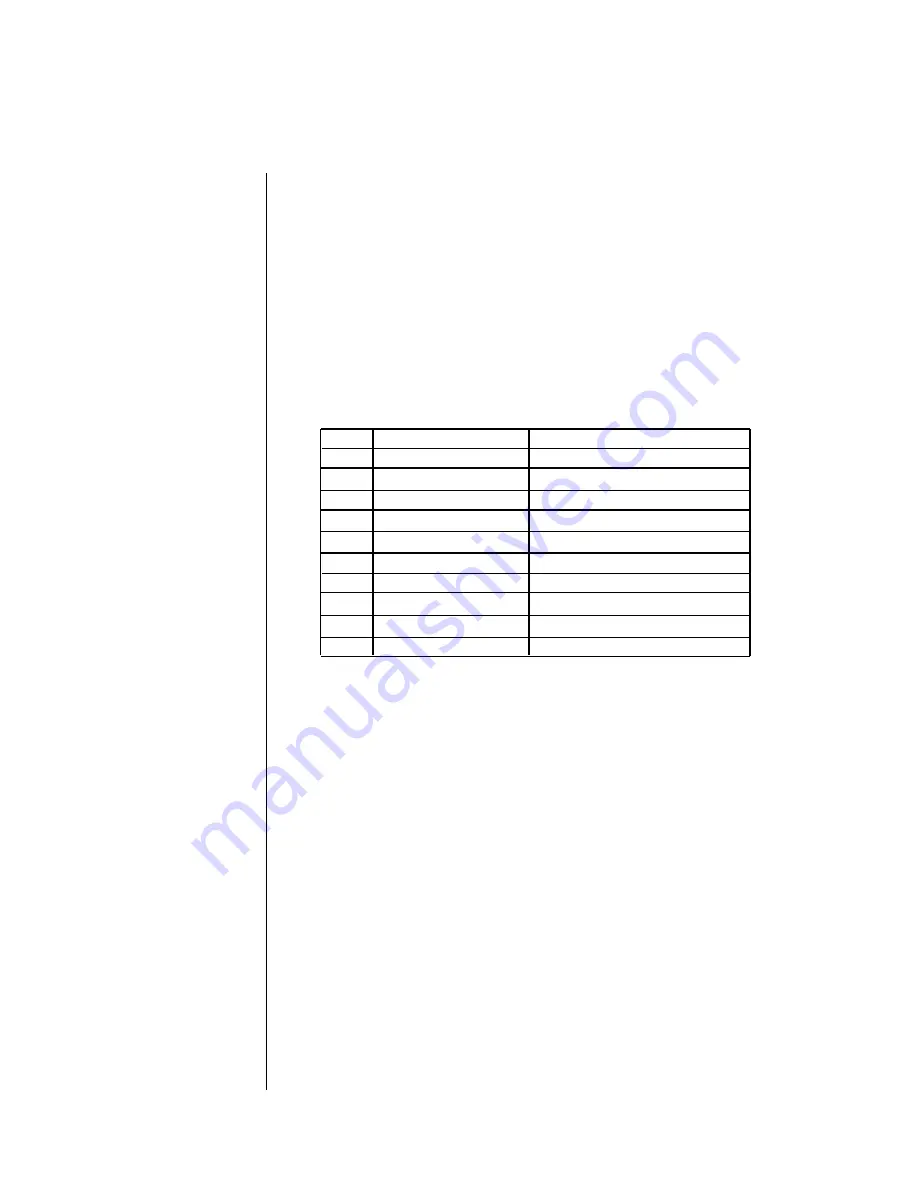
Micro Tuning
The new DX7s contains eleven
preset Intonations, which
provides you with a good
introduction to alternate
intonation schemes.
Micro Tuning is another new feature for the DX7s. It offers the possibility of performing
music using tuning and intonation systems other than Equal Temperament (which is the
current standard tuning for both pianos and synthesizers). Micro Tuning data is accessed
using button 29. New Micro Tunings are created in Micro Tuning Edit Mode, which is
accessed using button 14 in conjunction with button 29.
Selecting a Micro Tuning
The DX7s is equipped with eleven preset Micro Tunings as part of its permanent memory.
The Micro Tuning Presets
1 Equal Equal Temperament
2 Pure (major) Pure (Major)
3 Pure (minor) Pure (Minor)
4 Mean tone Mean tone
5 Pythagorean Pythagorean
6 Werckmeister Werckmeister
7 Kirnberger Kirnberger
8 Vallotti, yong Vallotti & Young
9 1/4 Shift eql 1/4 Shifted equal
10 1/4 Tone 1/4 Tone
11 1/8 Tone 1/8 Tone
In presets 2 ~ 5, the tuning can be adjusted according to the key of the music being
played.
Micro Tuning Editing and Storage
If you are interested in alternate tunings and intonations, you may want to create your
own sets of Micro Tuning data. The DX7s provides two memory locations for this
purpose: User 1 and User 2. These two sets of data are stored as part of the Internal
Memory, and will be stored along with all other Internal data when the Internal Voice &
Performance Memory is saved to another storage medium (such as a RAM cartridge). In
addition, up to 63 Micro Tunings can be saved to a RAM cartridge that has been properly
formatted for that purpose.
- 38 -
Summary of Contents for DX7s
Page 1: ...YAMAHA DIGITAL PROGRAMMABLE ALGORITHM SYNTHESIZER OWNER S MANUAL ...
Page 7: ...Playing the DX7s 1 ...
Page 25: ...Creating and Storing New Sounds 19 ...
Page 34: ... 28 ...
Page 35: ...Using the New Performance Features 29 ...
Page 38: ...Button 29 LCD Displays 32 ...
Page 45: ...Entering the Micro Tuning Edit Mode Editing Micro Tuning Data Storing Micro Tuning Data 39 ...
Page 46: ... 40 ...
Page 47: ...Using the New Voice Features 41 ...
Page 51: ...Button 10 LCD Displays 45 ...
Page 64: ...Editing Fractional Scaling Data Storing Fractional Scaling Data 58 ...
Page 65: ...Memory Functions 59 ...
Page 68: ...Button 14 LCD Displays 62 ...
Page 69: ... 63 ...
Page 76: ...Formatting a RAM Cartridge Loading Voice Performance Data from a RAM Cartridge 70 ...
Page 77: ...MIDI Functions 71 ...
Page 80: ...Button 32 LCD Displays 74 ...
Page 85: ...Appendices 79 ...
Page 89: ......
Page 90: ...MIDI DATA FORMAT 1 Transmission Requirements Add 1 ...







































